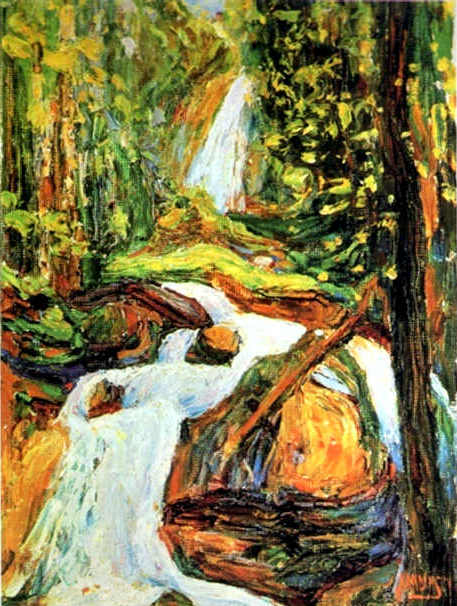Kandinsky’s early paintings featured earthy, naturalistic landscapes and images. He loved Russian folk art and his use of vibrant color signified a connection both to this folk art and to contemporary avant-garde movements like Fauvism. Colors stayed with him – his early works featured this heightened sense of color that would later be pushed to extremes. Kandinsky’s focus on one color or group of colors is reminiscent of Bely’s use of colors as symbols in Petersburg.

In this painting, Murnau-Staffelsee (1905), the rich purples and greens exemplify this heightened sense of color, and showcase how Kandinsky began to construct paintings around particular experiences of color.

This painting, Kochel – Waterfall I (c. 1900) is emblematic of Kandinsky’s early pastoral leanings. In it, shapes are very definitively shapes, and there is minimal abstraction. The waterfall can be clearly distinguished from the trees, branches, and rocks, although there are only a few colors used.
Old Town II (1902), painted after a trip to Bothenburg ob der Tauber, showcases the same trends as Kochel – Waterfall I. About this painting, Kandinsky wrote in Remembrances (1913),
On good advice, I visited Rothenburg ob der Tauber… Only one picture has survived from this trip, The Old Town, whcih I painted from memory only after my return to Munich. It is sunny, and I made the roofs just as bright a red as I then knew how.
Even then, Kandinsky’s focus on color was evident.